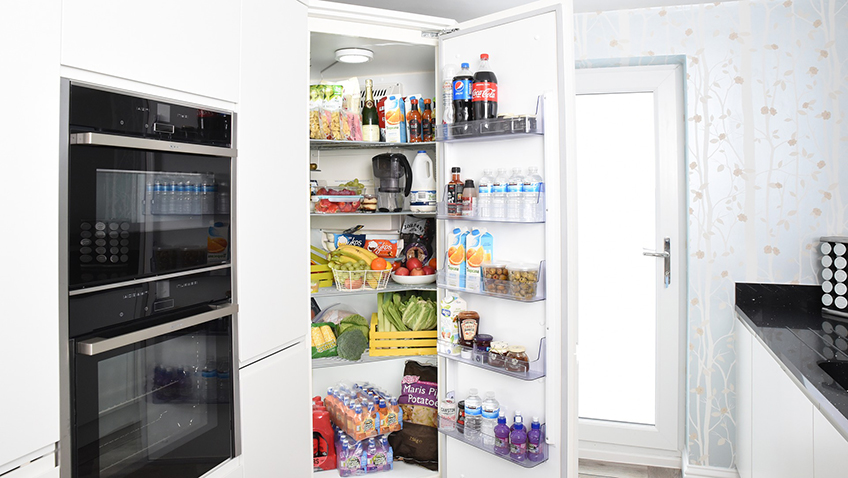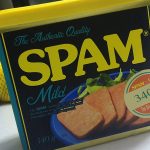The elderly need to take greater precautions regarding the safe storage of food than the young because as we age our immune system can struggle to overcome infectious organisms. One of the worst sources of these deadly pathogens comes from our friend in the kitchen, the fridge, which to the unwary can become a deadly enemy.
Reports of people falling victim to food poisoning are numerous; something like one in seven has been quoted although the fridge is not solely responsible. According to the Food Standards Agency website more than 500,000 cases of food poisoning can be attributed to known pathogens but the figure would more than double if it included illnesses caused by unknown pathogens.
Campylobacter is the most common source of foodborne infection followed by Clostridium Perfringens and then norovirus. If you want to go to hospital the best villain is Salmonella which chalks up around 2,500 admissions each year.
If the odds against the average person suffering food poisoning is one in seven how long before your kitchen is caught out? Given the risk it is just as well to think of the fridge lurking in your kitchen as a silent killer waiting for an opportune moment to catch you and your loved ones unawares.
Fridge hygiene and good practice
The basic rules of fridge hygiene may seem simple. For example always close the door properly, do not allow raw meat to contact cooked meat, regularly clean the fridge and occasionally check the temperature. Yet it’s surprising how often even basic rules are overlooked.
The rules are not as simple as you might think but virtually anyone can become a food safety investigator in the home. For example, how do you check the temperature of your fridge? You could put a thermometer on the fridge shelf and leave it a while but you would get a more accurate reading if you shoved it into a pack of butter. Inserting a temperature probe into a food item that has been in the fridge for some time is far more likely to be correct than measuring the air temperature. So don’t lay your thermometer on the shelf if you want an accurate reading.
Of course this all assumes your thermometer is accurate. Have you calibrated it? This is done by using fixed points or known temperatures such as ice which melts at zero degrees but don’t use ice-straight from the freezer as it will be at the freezer temperature, allow it to melt at zero degrees and then check the temperature. Other fixed points are the boiling point of water and body temperature – assuming you are in good health.
Keeping the fridge door shut properly seems easy enough but squeezing food into the fridge can compromise the seal when having to push the door closed. Assuming you know the operating temperature of your fridge according to its thermostatic setting you need to maintain it.
Putting hot food into a refrigerator is not good and it will warm the contents of all the other foods. Opening the door too frequently lets in warm air and means the temperature isn’t always what you think it is. This also introduces moisture which builds up as ice and uses unnecessary energy if you are triggering an automatic de-icing function too frequently. A friend of mine recently ruined her fridge by trying to defrost it with a sharp knife.
Regularly cleaning your fridge is good practice but who has the time to consistently monitor every tiny spill or small damage to packaging inflicted during storage with food constantly being removed, added or moved around? It helps therefore to rigorously stick to the rules of good practice and keep products such as cheese, especially soft cheese, in sealed separate containers and to keep raw meat effectively separated from contact with cooked meat. Older food should also be consumed first.
A refrigerator is a dangerous weapon in the wrong hands or when working at the wrong temperature. It can be a breeding ground both for spoilage and for pathogenic bacteria. Pathogenic bacteria cause food poisoning and spoilage bacteria make food unacceptable
No fool-proof way to show who is at fault
The food service industry has become very accomplished in eliminating contamination in most of its products. But once food packaging is opened and seals are broken recontamination by bacteria on your hands, utensils, kitchen surfaces or from the refrigerator when you return opened products will influence how long the food will keep. The cleanliness of your kitchen surfaces, gadgets and fridge, in a microbiological sense, determines how long your food will remain safe. Unfortunately there is no fool proof test to show who is at fault if chilled food fails to meet its use by date.
I have kept in touch with a former colleague who is now retired. He recounted that his neighbour was complaining that her milk was going sour quickly. On further investigation he found that her fridge was running at over 15C, which was the temperature of a cold larder back in the pre-fridge fifties.
When food poisoning incidents can prove so deadly regular cleaning, sealing and checking can ensure food that is safely to everyone’s taste.
By Dr M. J. Lewis, Food Scientist





